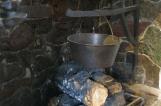11
DINNER'S READY!
The eating habits at the presbytery were similar to those of the common people. Farm products (fruit, vegetables, eggs, cheese, meat and fish) were the main part of the menu. Bread was a staple item of the diet since it was cheap and kept the appetite in check. It accompanied every meal.
12
Bread bin19th century, circa 1800
Batiscan (Quebec), Canada
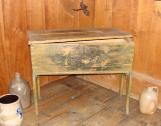 Credits:
Credits:Collection of the Musée de la civilisation
Archives of the Fondation des Amis du Vieux presbytère de Batiscan
13
Bread bin19th century, circa 1800
Batiscan (Quebec), Canada
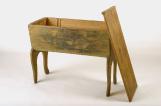 Credits:
Credits:Collection of the Musée de la civilisation
Idra Labrie
14
Toaster19th century, circa 1800
Batiscan (Quebec), Canada
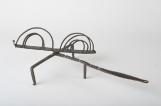 Credits:
Credits:Collection of the Musée de la civilisation
Idra Labrie
15
Butter mold19th century, circa 1800
Batiscan (Quebec), Canada
 Credits:
Credits:Collection of the Musée de la civilisation
Archives of the Fondation des Amis du Vieux presbytère de Batiscan
16
Butter firkin19th century, circa 1800
Batiscan (Quebec), Canada
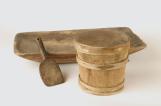 Credits:
Credits:Collection of the Musée de la civilisation
Idra Labrie
17
As for the preparation of meals, the menu basically consisted of stews, pea soup, pork roasts, meat pies and pâtés. Then, when winter came, the food accumulated during the summer was eaten. This meant consuming quantities of dried or smoked foods. Meat was not that popular in the diet of the settlers. They could not eat meat on days of abstinence nor during the fasting periods prescribed by the Church, Lent or Advent for example. Over the course of a year, these periods added up to almost one day out of two. At times, the priest would dispense the parishioners of these obligations, for example at the time of the hardest farm work, but in general, these rules were followed rigorously. What is more, oxen and horses being precious farm animals, one would think twice before having these butchered. People favoured eating pork, poultry and game. If these were not available, then fish was also a good option. Eels especially, were plentiful on the banks of the St. Lawrence River.
18
Three-tier stove19th century, circa 1850
Batiscan (Quebec), Canada
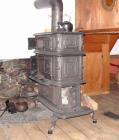 Credits:
Credits:Collection of the Musée de la civilisation
Archives of the Fondation des Amis du Vieux presbytère de Batiscan
19
Three-tier stove19th century, circa 1850
Batiscan (Quebec), Canada
 Credits:
Credits:Collection of the Musée de la civilisation
Archives of the Fondation des Amis du Vieux presbytère de Batiscan
21
More than a mere servant, the housekeeper was also a companion and confidante to the priest. Her friendly presence was quite comforting to the man who carried the weight of the parish on his shoulders.
22
The parish priest and his maidservant17 March 2008
Batiscan (Quebec), Canada
 Credits:
Credits:Collaboration of Vox, Cap-de-la-Madeleine
23
In order to prevent malicious gossip, only women over 40 years of age could live at the presbytery. Housekeepers were usually old maids or widows, these older women being less alluring...
24
The parish priest and his maidservant20th century, circa 1972
Ste. Marie de Beauce (Quebec), Canada
 Credits:
Credits:Folklore and ethnology archives at Laval University, Coll. Marc Gagné, recording no. 1324.
